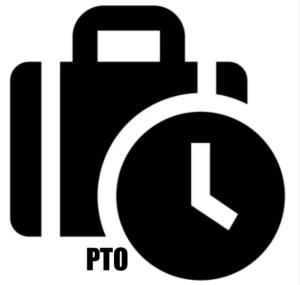Which Consumer-Driven Health Plan Is Right for Your Business?
Consumer-driven health plans like health savings accounts (HSAs), flexible spending accounts (FSAs), and health reimbursement arrangements (HRAs), can help soften the blow of continually rising health care costs, but it’s important to understand what each option requires and provides. Here are brief descriptions of the similarities and differences concerning HSAs, FSAs and HRAs:
HSAs
Due to their tax-favored status, HSAs require individuals to meet these qualifications:
Be covered by a high deductible health plan (HDHP)
Not have any other health coverage (with some exceptions)
Not be claimed as a dependent on another person’s tax return
Not be covered by Medicare
The employer and employee can contribute to the HSA in the same year, subject to annual limits. Employers may allow employees to make pre-tax salary reduction contributions to fund their HSAs. Individuals may roll over unspent funds in the HSA from year to year. Since the HSA is a tax-exempt account owned by the employee, he or she may keep the account upon termination of employment or retirement.
FSAs
Health FSAs provide a means for employees to reduce their income tax liability through salary reduction. The Affordable Care Act (ACA) limits employee’s pre-tax contributions to their health FSAs to $3,050 (adjusted for inflation for future plan years). Since only employees can participate in a health FSA, self-employed individuals can establish health FSAs for their employees, but cannot set up their own accounts. Also a “use-it-or-lose-it” provision, meaning that employees must use every dollar in the account by the end of each year, which can lead to overfunding the account and then spending unnecessarily at the end of the year to avoid forfeiting the money. Some options for protecting those unused funds exist, but it is best to check with a qualified benefits expert first.
HRAs
HRAs allow employees to use employer contributions to pay for (or reimburse) eligible medical care expenses. HRAs can only be funded with employer money, and unused HRA balances may accumulate from year to year. There is no specified cap on the amount an employer is allowed to contribute to an HRA. Also, an HRA is not subject to the uniform coverage rule that applies to health FSAs. Like health FSAs, only employees can participate in an HRA, which means that self-employed individuals cannot participate in an HRA on a tax-favored basis.
Introducing consumerism into your health plan requires an evaluation of the benefits and disadvantages of HSAs, FSAs and HRAs. No single solution is right for every employer. If your organization is considering implementing a consumer-driven health plan, the Benefits team at The Reschini Group can help determine the best plan for you.
Copyright 2023 The Reschini Group
The Reschini Group provides these updates for information only, and does not provide legal advice. To make decisions regarding insurance matters, please consult directly with a licensed insurance professional or firm.
Offering Coverage for Employee Mental Health
 Among the many lasting effects of the COVID-19 pandemic is the impact on mental health. Months of isolation, coupled with anxiety about job security and physical health, followed by the economic stress from inflation and supply chain issues, have helped to fuel lingering mental health challenges for millions – including your employees.
Among the many lasting effects of the COVID-19 pandemic is the impact on mental health. Months of isolation, coupled with anxiety about job security and physical health, followed by the economic stress from inflation and supply chain issues, have helped to fuel lingering mental health challenges for millions – including your employees.
In fact, while more than one in five Americans have diagnosable mental disorders at some point in their lives, only about half of them receive professional mental health treatment. One main reason – seeking access to such treatment – can be attributed to whether the person’s employer offers mental health benefits.
Under the Affordable Care Act, non-grandfathered health plans in the iCndividual and small group markets are required to cover mental and behavioral health treatments as one of the 10 essential health benefits. That means most fully insured group health plans sponsored by small employers (typically those with up to 50 employees) must include coverage for mental health benefits. Also, health plans must comply with the Mental Health Parity and Addiction Act of 2008, which prohibits group health plans (and health insurance issuers providing mental health and substance use disorder benefits) from imposing less favorable benefit limitations on those benefits than what they impose on surgical and medical care.
Beyond the legal and policy compliance considerations, however, providing adequate mental health benefits also makes economic sense. More employers have come to recognize that the cost of lost productivity due to employees suffering from mental health issues exceeds the cost of providing adequate mental health benefits coverage.
Options available to employers to help address these issues include:
- Using Employee Assistance Programs to remove the stigma of mental health treatment and to help offset the cost of treatment, so that more employees seek help.
- Making mental health screenings more widely and easily available to employees.
- Offering employee education initiatives.
- Enlisting the help of primary care physicians to bring mental health considerations into the overall picture of assessing employee health.
The U.S. Department of Labor has more information on mental health at www.dol.gov. You can also contact the Benefits team at The Reschini Group for more information and guidance on this important topic.
Copyright 2023 The Reschini Group
The Reschini Group provides these updates for information only, and does not provide legal advice. To make decisions regarding insurance matters, please consult directly with a licensed insurance professional or firm.
Benefits Blog: HSA 2022 Compliance Limits
 A clear understanding of the rules up-front helps to avoid problems down the road. This can be especially true when it comes to government programs and the tax implications they represent. For example – Health Savings Accounts (HSA), a popular type of tax-advantaged medical savings account available to individuals enrolled in high deductible health plans (HDHPs).
A clear understanding of the rules up-front helps to avoid problems down the road. This can be especially true when it comes to government programs and the tax implications they represent. For example – Health Savings Accounts (HSA), a popular type of tax-advantaged medical savings account available to individuals enrolled in high deductible health plans (HDHPs).
Individuals can use HSAs to pay for expenses covered under the HDHP until their deductible has been met, or they can use their HSAs to pay for qualified medical expenses that are not covered under the HDHP, such as dental or vision expenses.HSAs provide a triple tax advantage—contributions, interest and earnings, and amounts distributed for qualified medical expenses are all exempt from federal income tax, Social Security/Medicare tax and most state income taxes. But because of an HSA’s potential tax savings, federal tax law includes strict rules for HSAs, including limits on annual contributions and HDHP cost sharing. These limits, which can vary based on whether an individual has self- only or family coverage under an HDHP, include:
- The maximum HSA contribution limit;
- The minimum deductible amount for HDHPs; and
- The maximum out-of-pocket expense limit for HDHPs.
Eligible individuals with self-only HDHP coverage will be able to contribute $3,650 to their HSAs for 2022, up from $3,600 for 2021. Eligible individuals with family HDHP coverage will be able to contribute $7,300 to their HSAs for 2022, up from $7,200 for 2021. Individuals who are age 55 or older are permitted to make an additional $1,000 “catch-up” contribution to their HSAs. The minimum deductible amount for HDHPs remains the same for 2022 plan years ($1,400 for self-only coverage and $2,800 for family coverage). However, the HDHP maximum out-of- pocket expense limit increases to $7,050 for self-only coverage and $14,100 for family coverage.Employers that sponsor HDHPs should review their plan’s cost-sharing limits (minimum deductibles and maximum out-of-pocket expense limit) for 2022. Also, employers that allow employees to make pre-tax HSA contributions should update their plan communications for the increased contribution limits.Contact the Benefits Team at The Reschini Group for more information.
Copyright 2022 The Reschini GroupThe Reschini Group provides these updates for information only, and does not provide legal advice. To make decisions regarding insurance matters, please consult directly with a licensed insurance professional or firm.
Benefits Blog: Health FSAs Feature Carry-Over Option
 Sometimes, leftovers can be more satisfying than when the meal was first served. You somehow appreciate it more, when you can enjoy something that wasn’t used up the first time.
Sometimes, leftovers can be more satisfying than when the meal was first served. You somehow appreciate it more, when you can enjoy something that wasn’t used up the first time.
Now, that satisfying carry-over feeling extends to Health Flexible Spending Accounts (FSA).
A Health FSA is an employer-sponsored account that employees can use to pay for or reimburse their qualifying medical expenses on a tax-free basis, up to the amount contributed for the plan year. Typically, Health FSAs are subject to a “use-or-lose” rule that generally requires any unused funds at the end of the plan year (plus any applicable grace period) to be forfeited.As an exception to this use-or-lose rule, however, employers may allow participants to carry over up to $500 in unused funds into the next year to pay or reimburse medical expenses incurred during the entire plan year to which it is carried over. Also, the carry-over amount does not count toward the Affordable Care Act’s (ACA) limit on employees’ salary reduction contributions to a health FSA.For this purpose, the remaining unused amount as of the end of the plan year is the amount unused after medical expenses have been reimbursed at the end of the plan’s run-out period for the plan year. For plan years beginning on or after Jan. 1, 2022, the limit on Health FSA carryovers increases from $500 to $570.The IRS has provided the following rules for Health FSA carryovers:
- A Health FSA may:
- Specify a lower amount as the maximum (and has the option of not permitting any carryover at all);
- Permit carryovers only if it does not also incorporate the grace period rule. The carryover may be used to pay or reimburse medical expenses incurred during the entire plan year to which it is carried over;
- Limit the ability to carry over unused amounts to a maximum period (for example, a health FSA can limit the ability to carry over unused amounts to one year); and
- A cafeteria plan is not permitted to allow unused amounts relating to a health FSA to be cashed out or converted to any other taxable or nontaxable benefit.
See how the Health FSA carry-over option can apply to your business and provide an added benefit for your employees. Contact the Benefits Team at The Reschini Group for more information.
Copyright 2022 The Reschini GroupThe Reschini Group provides these updates for information only, and does not provide legal advice. To make decisions regarding insurance matters, please consult directly with a licensed insurance professional or firm.
Benefits Blog: ACA Affordability Percentages Down for 2022
 The federal Affordable Care Act (ACA), through Internal Revenue Service (IRS) guidelines, has adjusted its affordability percentages downward in 2022, meaning that employers may need to change some of their employee contribution levels.
The federal Affordable Care Act (ACA), through Internal Revenue Service (IRS) guidelines, has adjusted its affordability percentages downward in 2022, meaning that employers may need to change some of their employee contribution levels.
On August 20, 2021, the IRS issued Revenue Procedure 2021-36 to index the contribution percentages in 2022 for determining affordability of an employer’s plan under the ACA.
For plan years beginning in 2022, employer-sponsored coverage will be considered affordable if the employee’s required contributions for self-only coverage does not exceed the following:
- 61% of the employee’s household income for the year for purposes of both the pay-or-play rules and premium tax credit eligibility; and
- 09% of the employee’s household income for the year for purposes of an individual mandate exemption (adjusted under separate guidance). Although this penalty was reduced to zero in 2019, some individuals may need to claim an exemption for other purposes.
The updated affordability percentages are effective for taxable years and plan years beginning on Jan. 1, 2022.This is a significant decrease from the affordability contribution percentages for 2021, which had been set at 9.83% and 8.27%. As a result, some employers may have to lower their employee contributions for 2022 to meet the adjusted percentage.Under the ACA, the affordability of an employer’s plan may be assessed in the following three contexts:
- The employer shared responsibility penalty for applicable large employers (also known as the pay-or-play rules, or employer mandate).
- An exemption from the individual mandate tax penalty for individuals who fail to obtain health coverage.
- The premium tax credit for low-income individuals to purchase health coverage through an Exchange.
Although all of these provisions involved an affordability determination, the test for determining a plan’s affordability varies for each provision.Understand where your organization falls within these ACA guidelines. Contact the Benefits Team at The Reschini Group for more information.
Copyright 2022 The Reschini GroupThe Reschini Group provides these updates for information only, and does not provide legal advice. To make decisions regarding insurance matters, please consult directly with a licensed insurance professional or firm.
Benefits Blog: Protecting Your Online Identity
 When are you not you?
When are you not you?
When hackers and other malicious parties steal your identity online, that’s when. Identity theft occurs when others obtain and use your personal information without your permission. Once this information has been acquired, thieves can use your existing credit cards or open new ones in your name, write bad checks, take out loans, and generally ruin your credit and reputation.
Once the theft has been spotted and reported, significant damage may – and most likely will – have been done.Beyond taking the obvious precautions, another way to safeguard yourself from the impact of identity theft is to secure the proper identity theft insurance coverage.Identity theft insurance can be purchased as a standalone policy or added as endorsement to existing homeowners or automobile insurance coverage. Even though identity theft insurance does not protect against the cost of the actual theft, it offers a relatively inexpensive option that will cover the cost of reclaiming your identity, to include such items as:
- Phone call charges, photocopying costs, and postage fees.
- Salary loss due to uncompensated time off from work.
- Legal fees.
Another attractive feature of this special coverage is that you can gain access to a fraud specialist who can provide valuable assistance in restoring your good name and protecting your identity. This service is part of the reimbursement offer for expenses associated with credit restoration, as well.Make sure you are always you. Protect yourself from identity theft and the financial fallout it wreaks. Contact the Benefits Team at The Reschini Group for more information.
Copyright 2022 The Reschini GroupThe Reschini Group provides these updates for information only, and does not provide legal advice. To make decisions regarding insurance matters, please consult directly with a licensed insurance professional or firm.
Benefits Blog: Five Ways to Save on Healthcare Costs

It’s no secret that healthcare expenses have been on a steady, and costly, climb for the past two decades. Price hikes of 6.5 percent are projected in 2022, with the ongoing COVID-19 pandemic playing a significant role in those increases. This fact of financial life means employers must think both strategically and creatively about how to lower their health benefits expenses in 2022. Here are five ways to help achieve savings:
- Control Drug Spending - Drug prices rise faster than any other medical service or commodity, with costs now 33 percent higher than in 2014, according to GoodRx. Employers can educate employees on the price differences between name-brand and generic medications, and encourage using generics to save money while still receiving the same quality treatment.
- Encourage Active Benefits Participation – This includes encouraging employees to improve their health literacy, research treatments, and price shop. By seeing specific prices for procedures and other services, employees can educate themselves before making costly health decisions.
- Offer Savings Accounts with Carryovers - Health savings accounts (HSAs), flexible savings accounts (FSAs), and other tax-advantaged savings account options empower employees to control their own spending and improve their health literacy. Many accounts allow for fund carryover year to year, encouraging more contributions. Since many employers match contributions up to a limit, more money added to these accounts means greater tax savings for everyone.
- Embrace Virtual Health Options - A major takeaway from the pandemic has been the expansion of telehealth services, allowing individuals to connect with health professionals quickly, safely, and less expensively. Employers adding telehealth services into their plan expand access to care and lower expenses for everyone.
- Consider Plan Funding Alternatives - A more drastic option for reducing health costs is restructuring how plans are funded. For instance, a self-funded plan may be more cost- effective than paying a monthly premium for a fully insured plan. Other options include level-funding or reference-based pricing models, each of which carries its own set of administrative rules and legal constraints. Funding decisions should not be taken lightly and should be based on several factors, such as size of an organization, risk tolerance, and financial stability, including employees' ability to take on large premium increases.
Selecting the best methods to contain healthcare costs depends on each organization’s unique capabilities. The Benefits Team at The Reschini Group can help sort out the right option for your particular situation. Contact us today to get a conversation started.Resources:Benefits Insights: Preventive CareBenefits Insights: Flexible Spending Accounts (FSA)Know Your Benefits: Strategies for Saving on Prescription Drugs
Copyright 2022 The Reschini GroupThe Reschini Group provides these updates for information only, and does not provide legal advice. To make decisions regarding insurance matters, please consult directly with a licensed insurance professional or firm.
The Reschini Blog: The Pros and Cons of PTO
 In the ever-shifting world of people management, the discretion over when time away from the job is justified has long been a source of friction and compromise. What is vacation? What is a sick day? What is an emergency? And who gets to make those final designations, the employee or the supervisor?
In the ever-shifting world of people management, the discretion over when time away from the job is justified has long been a source of friction and compromise. What is vacation? What is a sick day? What is an emergency? And who gets to make those final designations, the employee or the supervisor?
Paid Time Off, or PTO, offers a management strategy designed to alleviate or eliminate those points of possible contention, by changing the nature of the discussion. Under a PTO system, employees can “bank” a pre-determined number of hours – either by pay period, or by month, or annually – then draw from those hours for whatever purpose they want.In addition to simplifying the administration of an employee’s time away, PTO treats the employee as an adult capable of managing his or her time responsibly while not needing to worry about justifying the reason to a manager, or offer misleading information about taking a sick day when not actually being sick. Also, PTO keeps healthy employees from feeling “penalized” for not taking sick days available to them.Having a PTO system in place also makes a company more attractive to potential employees and increases loyalty among current employees, since time off is treated as a pool of hours, and not segmented into categories. This means, for example, that unused sick days can be automatically used to take more time for vacation.Of course, some caution must be taken with plans like PTO. Managers must watch so that employees do not abuse the system, taking unreasonable stretches of time away that impact the company negatively. Also, managers must still take responsibility for sending home an ill employee, who would prefer to stockpile time for vacation instead.But for organizations with a culture that welcomes flexible work schedules, PTO can be a great tool for all involved, as an attractive alternative to traditional vacation and sick time off.Contact the Benefits team at The Reschini Group to learn more.
Copyright 2021 The Reschini GroupThe Reschini Group provides these updates for information only, and does not provide legal advice. To make decisions regarding insurance matters, please consult directly with a licensed insurance professional or firm.
The Reschini Benefits Blog: Total Compensation Statements
 For many employees, the paycheck represents the sum total of how their employer compensates them. But in many cases, that’s not the complete picture.
For many employees, the paycheck represents the sum total of how their employer compensates them. But in many cases, that’s not the complete picture.
From the employer’s perspective, the benefits package offered to their workers may be quite substantial, but those same employees may not be aware of or may not understand the full scope of what they’re being offered. A Total Compensation Statement can help raise appreciation, morale, and loyalty among the members of a workforce.
A Total Compensation Statement highlights the monetary value of a company’s benefits package, including those perks that may be overshadowed by traditional benefits, to include information on:
- Salary
- Bonuses
- Commissions
- Stock options
- Stock grants
- Employee stock purchase plan
- Retirement plan
- Social Security contributions
- 401(k) matching contributions
- Paid time off
- Coverages for health, life and disability insurance
- Wellness rewards (e.g., discounts and cash bonuses)
By assigning a dollar amount to benefits that do not seem to have a tangible monetary value, employers can promote the idea of total compensation, beyond just a paycheck. Pulling back the curtain in this way can lead to higher retention rates among employees and can make the organization more competitive when talking with recruits during the hiring process.Committing to providing Total Compensation Statements will require some investment of time and resources to gather and present this data, but the return on this investment can be more than worth the effort.Contact the Benefits team at The Reschini Group for more information.Here is a resource for total compensation:Total Rewards - Compensation and Benefits
Copyright 2021 The Reschini GroupThe Reschini Group provides these updates for information only, and does not provide legal advice. To make decisions regarding insurance matters, please consult directly with a licensed insurance professional or firm.
Benefits Blog: Balancing the Employee’s Right to Privacy
 While having conversations, writing emails and going about business at home, the law provides privacy rights that restrict others from breaching one’s sense of security. However, when individuals go into a work setting, those rights are not as defined.
While having conversations, writing emails and going about business at home, the law provides privacy rights that restrict others from breaching one’s sense of security. However, when individuals go into a work setting, those rights are not as defined.
The law is unclear regarding the employer’s need to know versus the employee’s right to privacy, which can cause confusion and conflict in the workplace.When determining the legality of a potential privacy infringement, the employer’s need for conducting a particular type of surveillance will typically be weighed against the employee’s expectation of privacy. Generally, the employer’s privacy policies, past actions concerning privacy, and whether there was a legitimate reason for the search play a role in whether there was a violation of one’s privacy rights. In addition, if an employer does one of the following, he or she is typically in violation of the employee’s expectation of privacy:
- Deception—Requiring an employee to have a medical exam and then testing urine for drugs without the employee’s knowledge. After failing the drug test, the employee is fired.
- Secret monitoring of an intrusive nature— The employer installs a video surveillance camera above bathroom stalls to detect employee theft.
- Confidentiality violation—The employer assures employees that information from a health questionnaire will remain confidential, but then shares it with a third party.
- Intrusions into employee’s personal life— The employer fires an employee because he or she is a member of an activist group whose mission the company does not support.
Suggestions for employers on to handle this issue include:
- Have clear policies in your employee handbook relating to privacy, investigations and surveillance, including use of email and company-provided electronic devices.
- Update policies as needed and inform employees of updates.
- Have all employees read and sign the policy and any updates.
- Make sure you have a legitimate work-related purpose for monitoring employees or their communications.
- Know federal, state and local laws regarding privacy and consult legal counsel if you are unsure.
For additional perspective on balancing the employer’s right to know and the employee’s right to privacy, contact the Benefits team at The Reschini Group today.Download these resources about employee privacy rights:
Contact The Reschini Group with questions about privacy rights.
Copyright 2021 The Reschini GroupThe Reschini Group provides these updates for information only, and does not provide legal advice. To make decisions regarding insurance matters, please consult directly with a licensed insurance professional or firm.
Benefits Blog: Be a Smart Health Care Consumer
 They used to say there were only two sure things in life – death and taxes. But another sure thing could be added today – rising health care costs.
They used to say there were only two sure things in life – death and taxes. But another sure thing could be added today – rising health care costs.
That makes it imperative for every individual to become a smarter consumer of health care, by taking charge of your care and coverage, asking more questions, and doing more independent research. Here are some specific steps:
Control out-of-pocket health care costs by carefully reviewing your health insurance plan options and selecting the ones that best meet the needs of you and your family. Those needing more chronic care and medications may want to choose a lower deductible plan, while those younger and healthier needing less care could potentially get by with a higher deductible option.Assert your rights as a patient and ask more questions of your doctor and pharmacist, such as:
- Why is this treatment necessary?
- How much will this treatment cost?
- Are there equally effective options that cost less?
- What is the current procedural terminology (CRT) code for this treatment, so that I can comparison shop my options?
- How can I improve my condition?
- Why are you suggesting this specific dosage?
- Is this prescription on my insurance plan’s approved list, or is this a specialty drug?
- Can you recommend a lower-cost or generic substitute?
Make every effort to choose in-network doctors when possible. Health care providers within your plan’s network typically cost less than those out-of-network. When selecting a plan, make sure your preferred doctors and hospitals are within the plan’s approved network.Seek outpatient care when available, without sacrificing quality of care. By avoiding being admitted to the hospital, the cost of your care goes down significantly. Only select an outpatient option when the proper level of care can still be provided.For more information on becoming a smarter health care consumer, contact the Benefits team at The Reschini Group today.Download these resources about reducing health care costs:How to Lower Health Care Costs Take Action - Preventive Care and Your Health Care Costs Take Action - Shop Around for Health Care
Copyright 2021 The Reschini GroupThe Reschini Group provides these updates for information only, and does not provide legal advice. To make decisions regarding insurance matters, please consult directly with a licensed insurance professional or firm.

